Dhanurasana(Bow Pose): How to Do, Benefits and Precautions
Sanskrit Pronunciation Dhanurasana(DHAH-noo-RAH-suh-nuh)) Meaning Dhanura = Bow / Asana = Pose Pose Type Backbend, prone Pose Level Intermediate to Advanced Anatomy Back, core, abdomen, thighs, chest, shoulders, hips Other Names Bow Pose, Arch Pose Uttana Mandukasana information Dhanurasana, or...
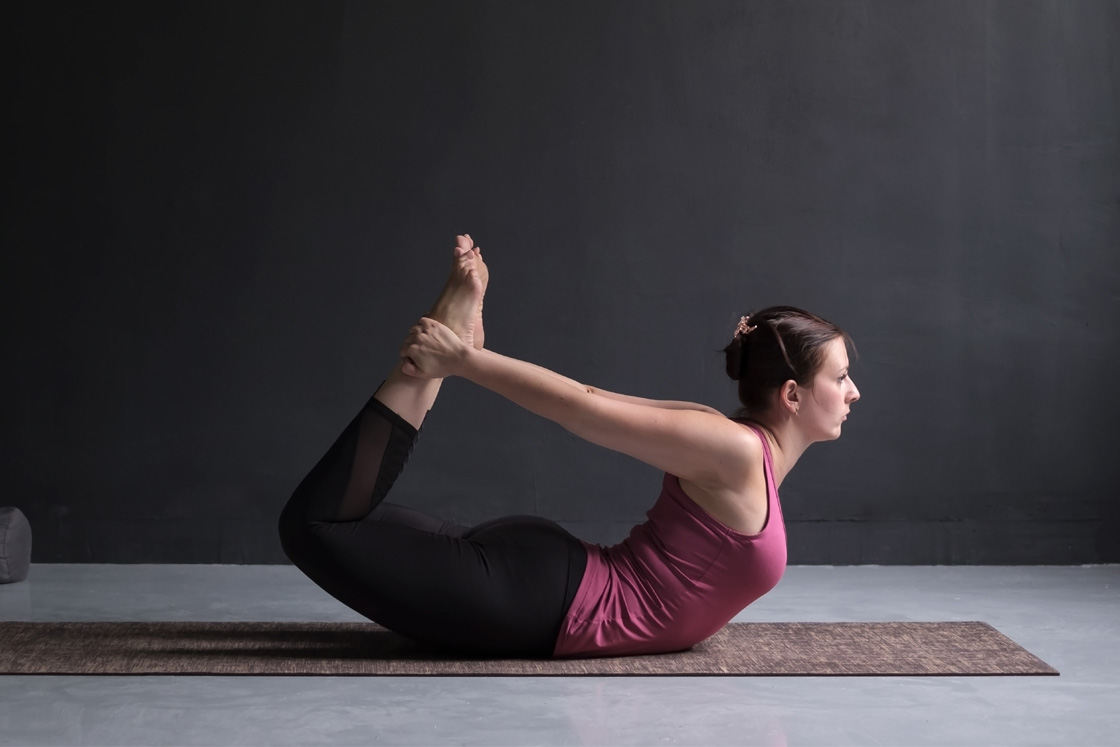
 Image source: shutterstock
Image source: shutterstock| Sanskrit Pronunciation | Dhanurasana (DHAH-noo-RAH-suh-nuh)) |
| Meaning | Dhanura = Bow / Asana = Pose |
| Pose Type | Backbend, prone |
| Pose Level | Intermediate to Advanced |
| Anatomy | Back, core, abdomen, thighs, chest, shoulders, hips |
| Other Names | Bow Pose, Arch Pose |
Dhanurasana, or Bow Pose, is an intermediate-level back-bending yoga posture known for its ability to stretch and strengthen the entire back, especially the lower back. This pose enhances flexibility and strength while stimulating various physiological and energetic systems within the body.
When practiced regularly, Dhanurasana can improve posture, alleviate back pain, and boost overall vitality. It engages the entire back, stretches the abdominal muscles, and opens the chest, making it a comprehensive pose for both physical and mental well-being.
Meaning
Dhanurasana, derived from the Sanskrit words “Dhanur” (bow) and “Asana” (pose), is named for how your body resembles a bow when practicing this pose. In this asana, you lie on your stomach, lift your chest and legs while holding your ankles, creating a bow-like shape. The pose symbolizes the powerful and dynamic energy of a bow being drawn, representing strength and flexibility in yoga.
In addition to its physical resemblance to a bow, Dhanurasana is believed to stimulate and balance the body’s vital energy, or prana. The pose enhances circulation and activates the core, invigorating both the body and mind. This dynamic asana helps harmonize the body’s physical and energetic aspects, promoting overall vitality and well-being.
Mythology
Dhanurasana, or Bow Pose, has special meaning in Hindu mythology. The word “Dhanur” means “bow,” a symbol often connected with powerful figures and heroes. A famous mythological character linked to this pose is Lord Rama from the epic Ramayana. Lord Rama, who is a part of the god Vishnu, is known for his skill with a bow and arrow. He used his bow to defeat the demon king Ravana and save his wife, Sita.
In this way, Dhanurasana is more than just a yoga pose; it symbolizes strength, focus, and precision. Just like Lord Rama used his bow to succeed in his mission, practicing Dhanurasana helps you build strength and focus. The shape of the pose, which looks like a bow, reflects the disciplined action and commitment found in these stories, adding a deeper meaning to the practice.
Dhanurasana(bow pose) practice guide
To effectively practice Dhanurasana, it’s essential to prepare your body with suitable preparatory poses and follow the steps carefully to ensure proper form and alignment. Begin by warming up with preparatory poses to ease into the backbend, and follow the step-by-step guide to perform the pose safely and effectively.
Preparatory pose
Bhujangasana (Cobra Pose) Salabhasana (Locust Pose) Virasana (Hero Pose)How to do dhanurasana(steps)
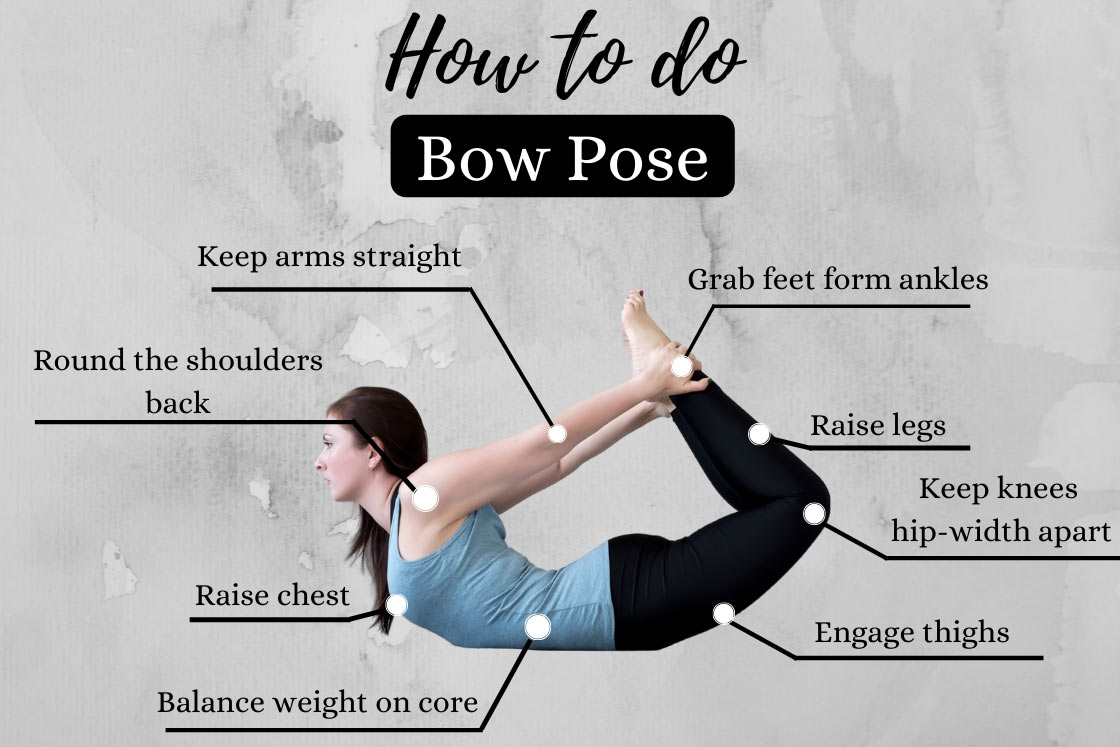
Follow-up pose
Ustrasana (Camel Pose) Setu Bandha Sarvangasana (Bridge Pose) Matsyasana (Fish Pose)Variations of dhanurasana
Parsva Dhanurasana (Side Bow Pose): This variation involves the same initial steps as Dhanurasana. Once you’ve formed the bow shape, exhale and turn your body to the right side, stretching your arms backward and pressing your chest outward. Return to the starting position on your belly with an inhale. Repeat the same movement to the left side. Perform this variation for an equal duration on each side to ensure balanced stretching and strengthening.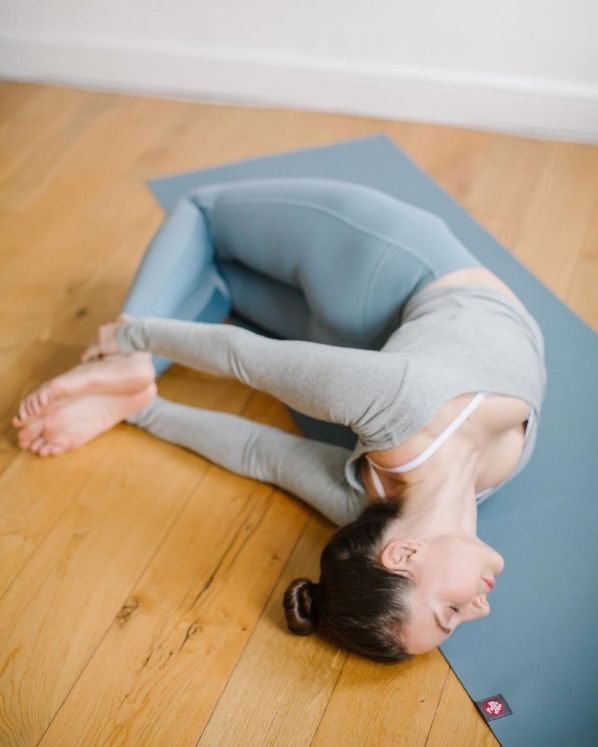 Image Source: sedayoga@instagram
Image Source: sedayoga@instagram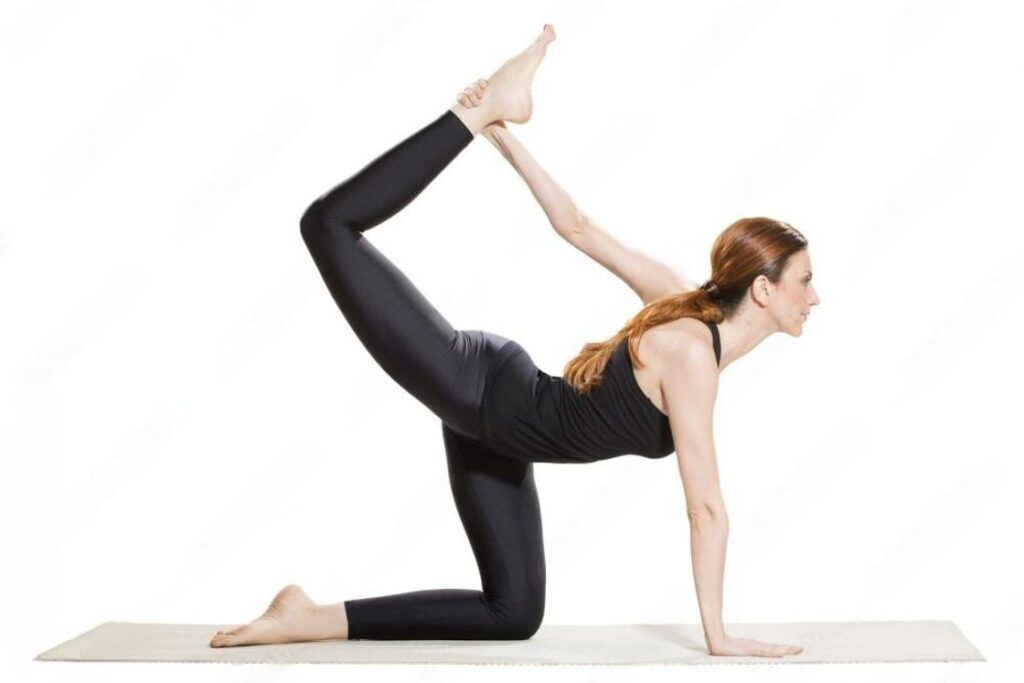 Image source: Adobe stockUrdhva Dhanurasana (Upward Bow Pose or Wheel Pose): Begin in a bridge pose and then lift your hips and chest further while pressing your hands into the mat behind your head. This is a more advanced variation that increases the stretch and intensity.
Image source: Adobe stockUrdhva Dhanurasana (Upward Bow Pose or Wheel Pose): Begin in a bridge pose and then lift your hips and chest further while pressing your hands into the mat behind your head. This is a more advanced variation that increases the stretch and intensity.
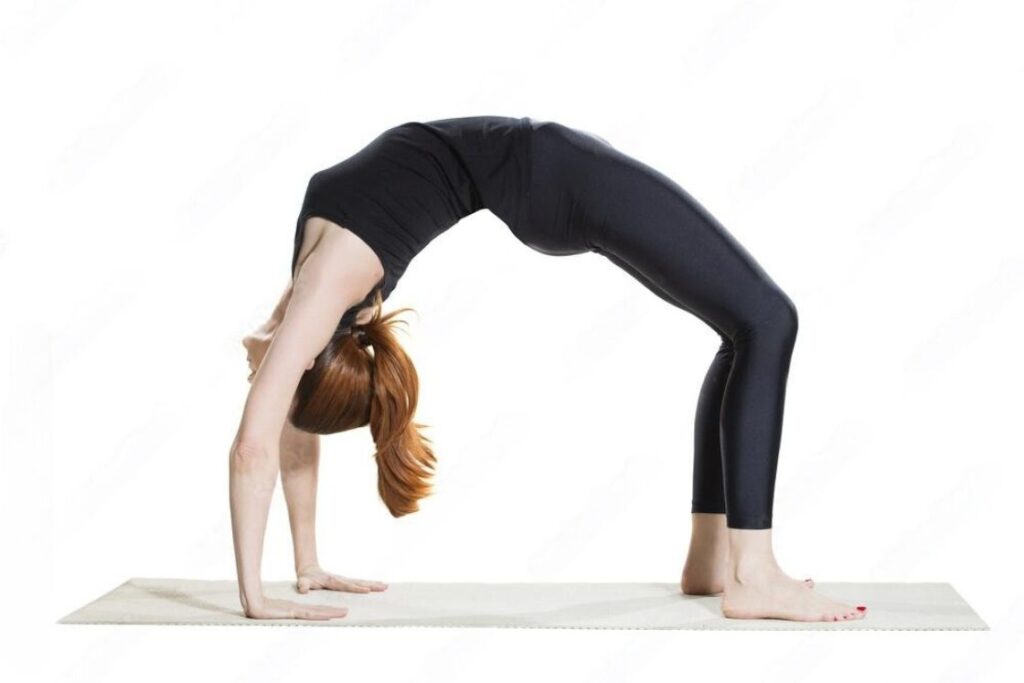 Image source: Adobe stock
Image source: Adobe stockProps & modification
Dhanurasana with a Strap: Use a yoga strap around your ankles if you have difficulty reaching them. Hold the strap with both hands and pull to lift your chest and thighs. This modification helps provide extra support and flexibility.
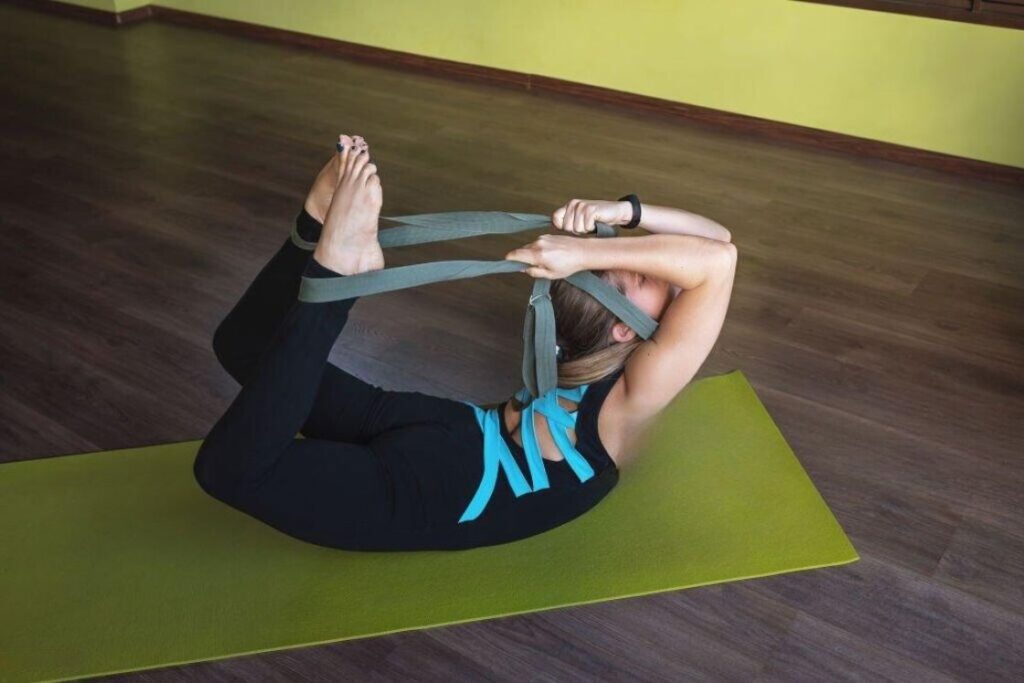 Image source: shutterstock
Image source: shutterstockDhanurasana with a Block: Place a yoga block under your chest for additional support. This variation can help beginners maintain the pose without straining their back, and gradually build strength.
Precautions
Ensure proper warm-up with gentle stretches to prepare your body and avoid injury. Grab your feet from the ankles rather than the tops to prevent slipping and ensure better balance. Keep your legs hip-width apart or closer; avoid spreading them too wide to reduce strain. Perform the pose on an empty stomach or at least 4-6 hours after eating to minimize discomfort from abdominal pressure. Maintain a steady flow of breath while in Bow Pose; do not hold your breath despite the abdominal pressure. Use a folded blanket or cushion under your knees if you have knee issues to reduce discomfort. Respect your body’s flexibility limits and avoid overstretching; stretch within your comfortable range.Contraindications
Avoid Dhanurasana with severe lower back pain or spinal disorders, as it may worsen these conditions. Skip the pose if you have recent abdominal surgeries or hernias, due to increased abdominal pressure. Do not practice during pregnancy because of potential strain on the abdomen and changes in balance. Avoid the pose with severe knee or hip injuries, as it can exacerbate these joint issues. Refrain from doing Dhanurasana with wrist injuries or carpal tunnel syndrome, as it may strain the wrists. Avoid the pose if you have severe asthma or respiratory issues, as it can affect breathing.Dhanurasana(bow pose) benefits
Dhanurasana, or Bow Pose, provides a wide range of benefits that enhance both physical and mental well-being. This powerful backbend stretches and strengthens the entire body, focusing on the back, abdomen, and legs. It improves posture, stimulates digestion, and boosts energy levels. Incorporating Dhanurasana into your practice can lead to increased vitality, improved spinal health, and enhanced overall fitness.
Strengthens the Back: This pose effectively tones and strengthens the entire back, particularly the lower back, which is beneficial for individuals with back issues. The deep backbend helps alleviate back pain and improves spinal health. Improves Flexibility: Dhanurasana enhances flexibility in the spine, chest, and legs. This increased flexibility supports overall mobility and can aid in the practice of other yoga poses. Stimulates Digestion: By applying gentle pressure to the abdominal region, Dhanurasana stimulates digestive organs and improves digestion. This can contribute to better digestive health and efficient nutrient absorption. Increases Lung Capacity: Expanding the chest during Dhanurasana improves lung efficiency and capacity, which supports better respiratory function and oxygen intake. Improves Circulation: Enhanced blood flow and core activation from the pose promote better circulation throughout the body, supporting cardiovascular health and overall vitality. Manipura Chakra Activation: Stimulating the Manipura Chakra (Solar Plexus Chakra) with this pose helps alleviate lethargy and boosts energy levels, enhancing overall motivation and vitality. Weight Loss and Body Shape: The intense abdominal stretch involved in Dhanurasana supports weight loss and helps in achieving a toned and well-defined body shape.Conclusion
In conclusion, Dhanurasana, or Bow Pose, is a powerful yoga posture that strengthens the back, enhances flexibility, and improves overall vitality. By incorporating this pose into your routine, you can benefit from better posture, increased energy, and improved digestive health. With its wide range of physical and mental benefits, Dhanurasana is a valuable addition to any yoga practice. Remember to practice it with proper technique and listen to your body to achieve the best results.
Dhanurasana(Bow pose) faqs
Q1. How long should I hold Dhanurasana?
Beginners should hold the pose for 10–20 seconds, intermediate practitioners for 20–40 seconds, and advanced practitioners for 40 seconds to 1 minute.
Q2. Who should avoid Dhanurasana?
Avoid Dhanurasana if you have abdominal issues, shoulder or knee problems, or cardiovascular conditions. Consult a healthcare provider if you’re unsure.
Q.3 Can Dhanurasana help with back pain?
Yes, Dhanurasana can help relieve back pain by strengthening the back muscles and improving flexibility. Practice regularly for best results.
Q4. How often should I practice Dhanurasana?
Practice Dhanurasana 2-3 times a week as part of a balanced yoga routine to gain its benefits and improve your overall flexibility and strength.
Q5. What precautions should I take while doing Dhanurasana?
Avoid performing on a full stomach, do not overstretch, and maintain proper breathing and alignment to prevent strain.
Q6. How can I ensure proper breathing during the pose?
Breathe deeply and steadily through your nose, maintaining a smooth and controlled breath throughout the pose to avoid holding your breath.
Q7. Is Dhanurasana suitable for beginners?
Yes, Dhanurasana is suitable for beginners, but it’s important to start slowly, listen to your body, and use props or modifications as needed to build strength and flexibility gradually.

 ValVades
ValVades 





























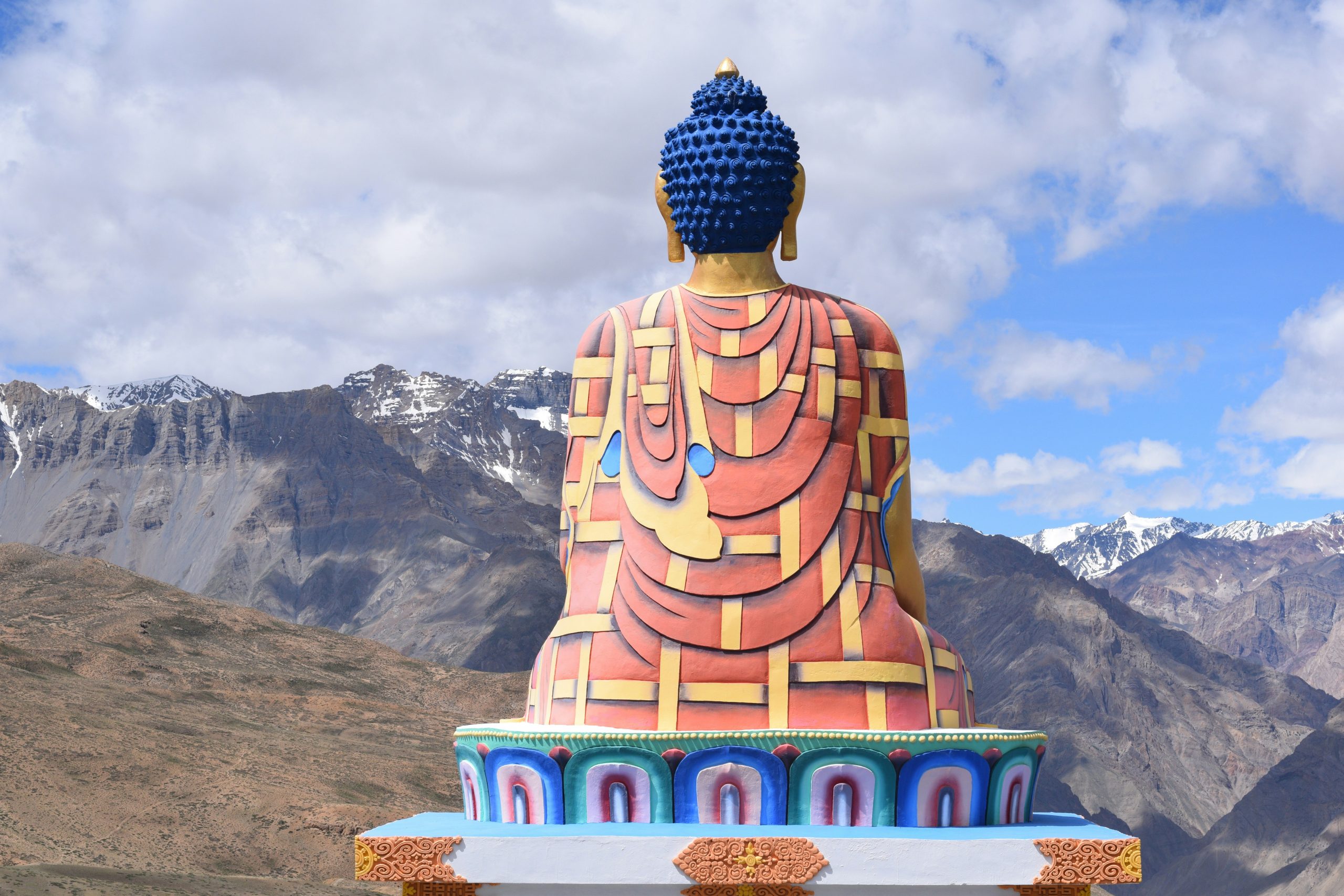


.jpg&h=630&w=1200&q=100&v=f776164e2b&c=1)